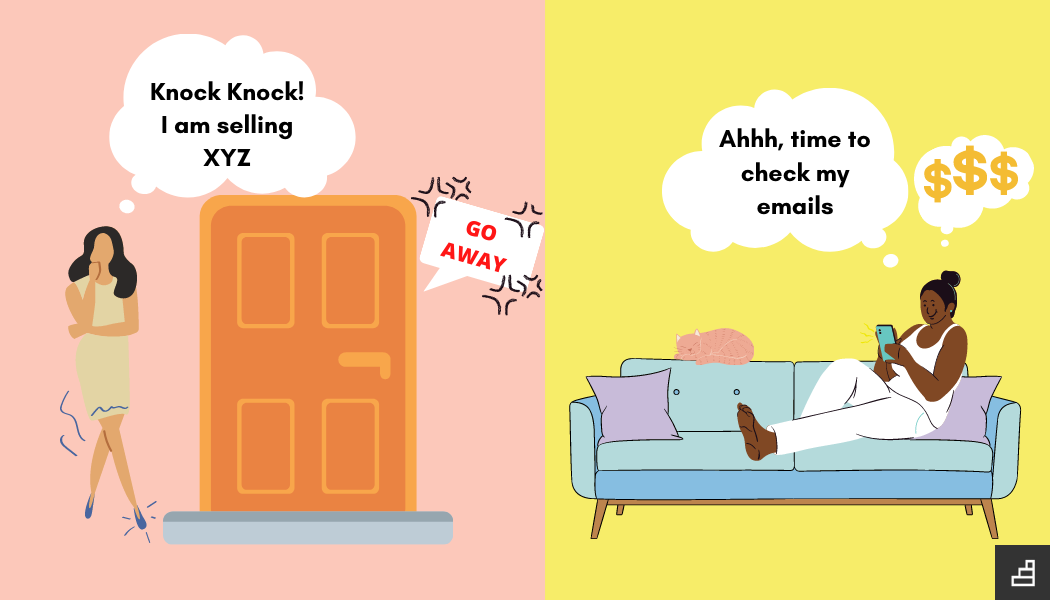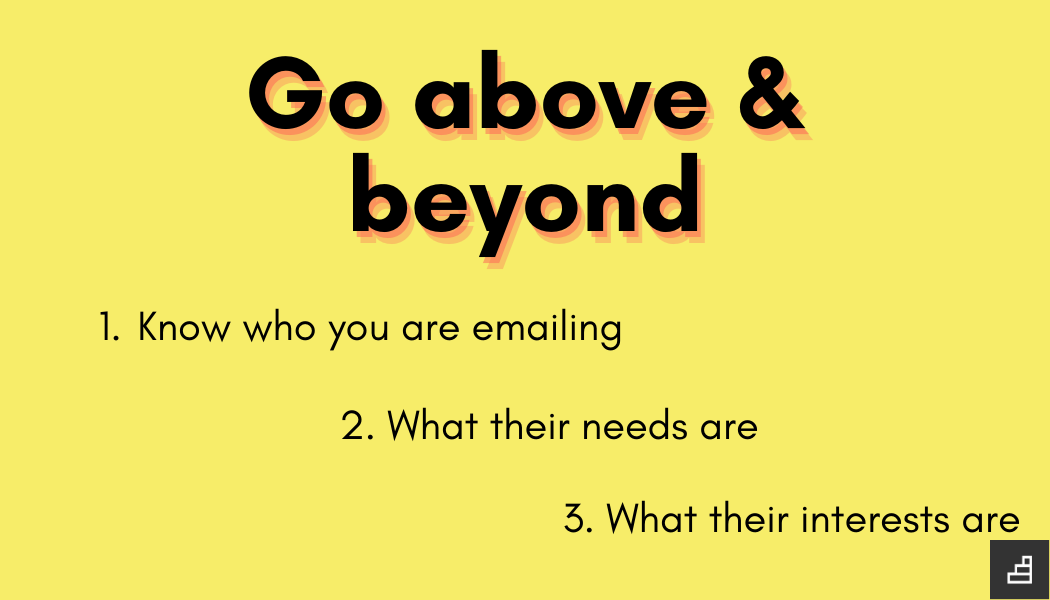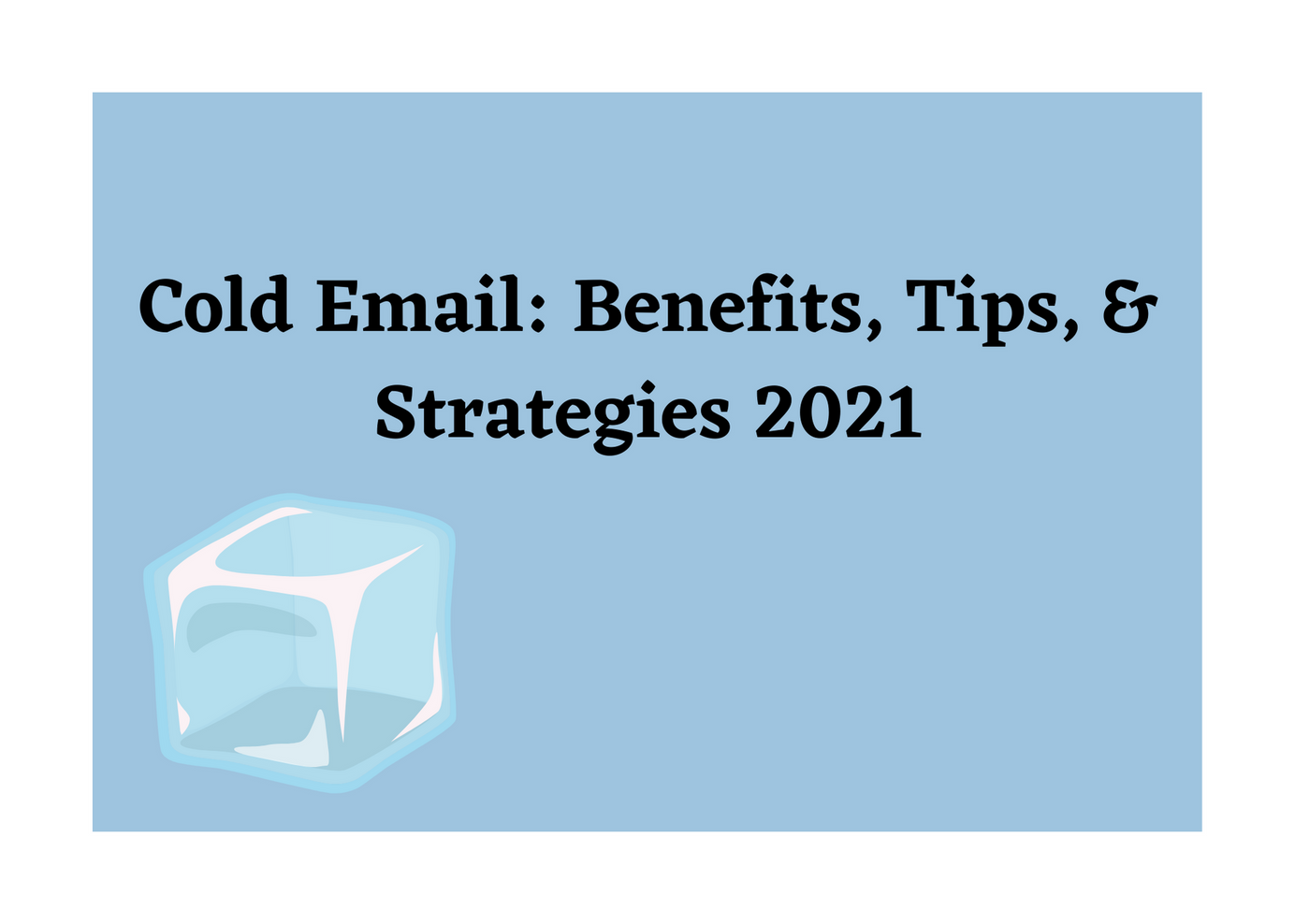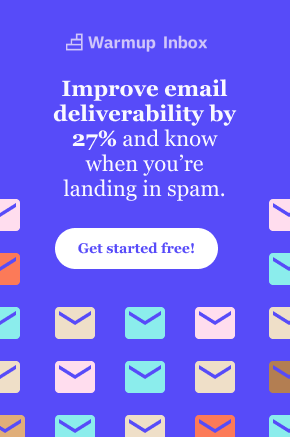
How to Write an Effective Cold Email
Spoiler alert: cold emails are actually effective.*
*If they’re written well
Cold emails are a great way to engage with new leads. People get a tsunami of messages in their inbox daily, and the idea of trying to ride that wave into having your message stand out from the crowd can be daunting.

The truth is, half the battle is getting into your recipients’ inboxes rather than their spam folders. The rest is all about getting them to open your message and read it all the way through.
So how do you craft a good cold email? We’re glad you asked.
What Is A Cold Email?
A cold email is an introductory message you send to someone who has no relationship with your brand. It’s entirely possible that this person hasn’t even heard of your business before.
If we’re being blunt, it is an unsolicited email. But ideally, the person you’re reaching out to is someone who would genuinely benefit from your product or service.
The goal of cold emails is to connect with someone who fits your target demographic and hopefully turn them into a warm lead. Often, companies will include some sort of incentive to encourage the reader to further engage with the brand, such as starting a free trial, booking a demo or meeting to learn more, and watching a helpful video.
Why Use Cold Emails?
If cold emails are unsolicited messages, and people already get a ton of emails they actually signed up for, then what’s the point of sending cold emails?
For starters, email is the least intrusive way to strike up a conversation with someone you’ve never talked to as a company. Receiving cold calls and knocks on the front door is an annoyance to most people, and they aren’t exactly in the most positive mindset when you start your pitch.
However, with cold emails, your customer can read your message in their own time, so you aren’t infringing on their day. Your representatives will feel more at ease because they won’t get hung up on or have the door slammed in their faces.

Emails can be personalized in a way that other methods of introduction can’t. Personalizing a cold email makes it feel less like an intrusion and more like a letter from a pen pal.
And it’s also helpful to note that cold email has a stellar return on investment (ROI). Emails cost nearly nothing to send, you can reach so many more people in a shorter amount of time, and your leads are far more likely to engage with your content in an email.
Components of A Cold Email
Because cold emails are all about quickly creating a relationship, it’s best to adopt a casual, conversational tone while staying relatively informal.
Now, that doesn’t mean to bust out the emojis, LOLs, and relaxed syntax, but that does mean that you’re going to write this email as if you’re sending a message to someone you’ve known your whole life.
At the same time, stay true to your brand. If it feels inauthentic to you when you write it, it’ll likely feel inauthentic to the reader as well.
Writing a cold email is a lot like writing a high school essay: you must have a clear beginning, middle, and end.

The Subject Line Of Your Cold Email
The first thing your potential customer will see is who the email is from and the subject line. Right off the bat, they should know who you are and what you’re doing in their inbox.
For example, if you’re a company that sells organic cat beds, and a customer gets an email from “noreply” about “Fluffy’s Fantastic Fit!” they’re going to be confused. But if they get a message saying, “Upgrade Your Cat’s Bed” from “Cat Kingdom Organics,” then they’ll probably know exactly what your email entails.
We’re not claiming that’s an ideal subject line. The moral of this story is to have your “from” come from either your business name or a person with your business’s name (“Jake from State Farm”) and to have your subject clearly demonstrate what to expect in the rest of the email (“Pay less for car insurance”).
Introduction Of Your Cold Email
Now that your recipient has opened your email, you introduce yourself and state the reason why you’re reaching out.
Body Of Your Cold Email
The body will take up most of the email, as it will go into detail about the products/services your brand offers and why this person needs them in their life.
Closing/Call to Action Of Your Cold Email
At the very end of your message, you’ll provide this person with a nudge in the director of the next actionable step they can take in engaging with your brand. This could be a link to “claim their 15% off” or “start their free trial” or “book a meeting to learn more.” Whatever the call to action is, it should be clear and directly move them farther down the sales funnel.
And of course, you’ll provide your name, title, contact information, and company website in your signature, so they know there’s a person behind the email and can get in touch with you if they have any questions.
Make Your Cold Email Personalized
Since people get so many emails in a day, they’re more likely to respond well to those that feel like they were written specifically for them.
The easiest way to personalize a cold email is to use their name. Unless you’re randomly sending out emails (which you shouldn’t be), then you should have names with the email addresses. Multiple services automate the process of inserting people’s names into emails.
Starting an email with “Hi (Customer Name)” is infinitely more appealing than an email that begins with “Dear Sir/Ma’am, I think you’d like my product or service because of X, Y, Z.” And don’t get us started on “To whom it may concern.” Even though it’s a cold email, you want the content to feel warm.

You can even personalize the subject line of your email. Having a personalized subject line is a great way to catch their attention because your email will stand out. A personalized subject line could look like “We’ve got a great deal for you, (Customer Name)” or “Only open if you’re going to (Industry Conference Name).”
If you want to go above and beyond in personalization, take time to think about who this person is, what they want, what their interests are, and how they see the world. Once you know that, you’ll know exactly how to write content that feels like you guys have been best friends for years.
TL; DR: Know who you’re reaching out to before you draft your email or make changes to a template. A little personalization goes a long way.
Get to the Point Quickly in Your Cold Email
This begins with your subject line. We said it before, and we’ll say it again: your subject line needs to tell your potential client why they’re getting this email. It’s illegal if you don’t, but also, if you do your homework, this person could actually benefit from your services and will want to read more.
Your subject line should be catchy, but it shouldn’t be too clickbait-y, or an ISP might mistake it for spam.
Your subject line should be short and sweet. Try to cap it at 50 characters or 6-7 words, as research by Return Path has shown that to be the ideal count for a subject line.
Once a person decides to open your email, you have approximately five seconds to convince them to keep reading. The best way to do that? Jump right in.
In your introduction, you don’t want to dawdle. Instead, say who you are, touch on a pain point, then offer your product or service as a solution to that pain point.
In your body, you’re going to give the elevator pitch of your value proposition. You’ll succinctly state what your product or service offers, how users benefit from your product or service, and why you’re different from your competitors.
However, it’s essential not to get caught up in listing every last detail about your product or service. It’s like going on a blind date and only talking about yourself. We know you’re trying to impress them, but it’s not having the effect you think it is.
Instead, you’ll show this person that you’ve done your research by highlighting the parts of your product or service that can impact their daily life. Adjusting the tone from “we’re awesome because of X, Y, and Z” to “I know you struggle with X, and our product/service offers Y to fix that problem” can make a massive difference to the person reading a cold email.
In other words, the initial email should be about trying to establish a relationship rather than making a sale. But being long-winded will not encourage this person to read all the way to the end of the email. Give them just enough of a taste that they want to follow up to learn more.
Your call to action should sum up everything that the customer just read with the added information of what to do next. Think of your closing as the bow on top of the present that says, “We’re offering you this; all you have to do is this.” And you’ll either have a link or a big button with a link that encourages the reader to click on it.
If you want to keep things simple, your call to action could be replying to the email to set up a meeting. You can end the email with something like, “If you have 30 minutes at some point this week, we can hop on a call, and I can explain how my product or service does X, Y, and Z. Just let me know what your schedule looks like.”
Either way, you’re encouraging them to strengthen the connection. After all, they read the email all the way through, and that’s a good sign.
Warmup Your Inbox Before Sending Cold Emails
Remember how in the intro, we said half the battle was getting into your recipients’ inboxes? We’re gonna circle back to that now.
You could write the best cold emails in the world, but that doesn’t do you any good if your emails only end up in spam folders. One of the best things you can do to improve your deliverability rate is to warm up your inbox before you launch a cold email campaign.

We’re grateful that ISPs are extra cautious when keeping users safe by filtering through their incoming messages. But it’s hard to feel that gratitude when your non-spam email is flagged as junk.
One of the top reasons marketing teams end up in junk folders is because spammers have a habit of opening an email account and sending out emails in bulk before they get blocklisted. So if an ISP sees that you suddenly sent out a thousand emails in a day when you usually only send out two hundred, they’re going to think there’s something phishy going on.
Instead of suddenly increasing the volume of emails you send in a day, warming up your inbox enables you to slowly ramp up the number of messages you send each day until you hit your target goal.
Warmup Inbox has everything you need to stop sending your cold emails directly to your customers’ spam folders. You could do the warming process yourself, but it’s a lot of manual, menial labor, and frankly, it’s a waste of your time and talents.
While we’re automatically warming up your inbox in the background, you could be focusing on discovering more leads, strategizing for future campaigns, or crafting the emails you want to send when your inbox is warm.
When your inbox is warm, the carefully tailored messages will land right where you want them: in the recipients’ inboxes.
Additionally, Warmup Inbox’s software will give you live updates on the health of your inbox to help you strengthen your reputation and increase your deliverability rate.
To discover how Warmup Inbox can revolutionize your cold email marketing strategy, learn more here or start your free trial today.
Newsletter
Join the newsletter to receive the latest updates in your inbox.





